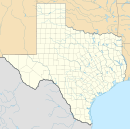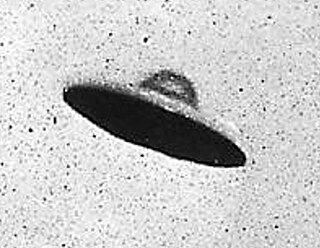
An unidentified flying object (UFO), more recently renamed by US officials as an unidentified aerial phenomenon (UAP), is any perceived aerial phenomenon that cannot be immediately identified or explained. On investigation, most UFOs are identified as known objects or atmospheric phenomena, while a small number remain unexplained.

UFO conspiracy theories are a subset of conspiracy theories which argue that various governments and politicians globally, in particular the Government of the United States, are suppressing evidence that unidentified flying objects are controlled by a non-human intelligence or built using alien technology. Such conspiracy theories usually argue that Earth governments are in communication or cooperation with extraterrestrial visitors despite public disclaimers, and further that some of these theories claim that the governments are explicitly allowing alien abduction.

Project Blue Book was the code name for the systematic study of unidentified flying objects by the United States Air Force from March 1952 to its termination on December 17, 1969. The project, headquartered at Wright-Patterson Air Force Base, Ohio, was initially directed by Captain Edward J. Ruppelt and followed projects of a similar nature such as Project Sign established in 1947, and Project Grudge in 1948. Project Blue Book had two goals, namely, to determine if UFOs were a threat to national security, and to scientifically analyze UFO-related data.
Kenneth Albert Arnold was an American aviator, businessman, and politician.
On January 7, 1948, 25-year-old Captain Thomas F. Mantell, a Kentucky Air National Guard pilot, died in the crash of his P-51 Mustang fighter plane near Franklin, Kentucky, United States, after being sent in pursuit of an unidentified flying object (UFO). The event was among the most publicized early UFO incidents.

The extraterrestrial hypothesis (ETH) proposes that some unidentified flying objects (UFOs) are best explained as being physical spacecraft occupied by extraterrestrial life or non-human aliens, or non-occupied alien probes from other planets visiting Earth.

Josef Allen Hynek was an American astronomer, professor, and ufologist. He is perhaps best remembered for his UFO research. Hynek acted as scientific advisor to UFO studies undertaken by the U.S. Air Force under three projects: Project Sign (1947–1949), Project Grudge (1949–1951) and Project Blue Book (1952–1969).
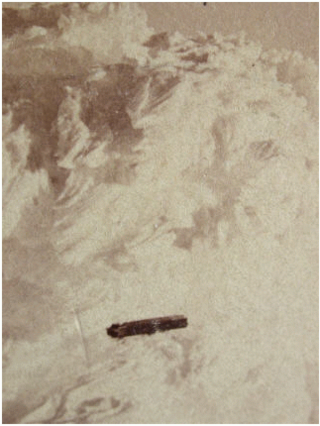
Mystery airships or phantom airships are a class of unidentified flying objects best known from a series of newspaper reports originating in the western United States and spreading east during late 1896 and early 1897. According to researcher Jerome Clark, airship sightings were reported worldwide during the 1880s and 1890s. Mystery airship reports are seen as a cultural predecessor to modern claims of extraterrestrial-piloted flying saucer-style UFOs. Typical airship reports involved night time sightings of unidentified lights, but more detailed accounts reported ships comparable to a dirigible.
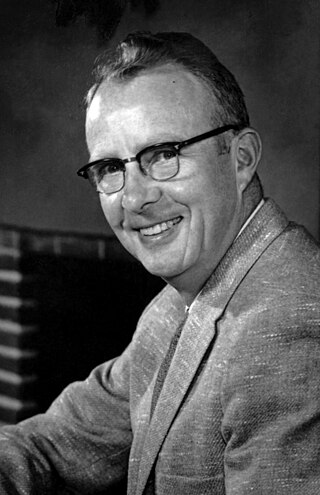
The Robertson Panel was a scientific committee which met in January 1953 headed by Howard P. Robertson. The Panel arose from a recommendation to the Intelligence Advisory Committee (IAC) in December 1952 from a Central Intelligence Agency (CIA) review of the U.S. Air Force investigation into unidentified flying objects, Project Blue Book. The CIA review itself was in response to widespread reports of unidentified flying objects, especially in the Washington, D.C. area during the summer of 1952.
Green fireballs are a type of unidentified flying object (UFO) that has been reported since the early 1950s. Early sightings primarily occurred in the southwestern United States, particularly in New Mexico. Although some ufologists and ufology organizations consider green fireballs to be of artificial extraterrestrial origin, mainstream, non-pseudoscientific explanations have been provided, including natural bolides.

Edward James Ruppelt was a United States Air Force officer probably best known for his involvement in Project Blue Book, a formal governmental study of unidentified flying objects (UFOs). He is generally credited with coining the term "unidentified flying object", to replace the terms "flying saucer" and "flying disk" – which had become widely known – because the military thought them to be "misleading when applied to objects of every conceivable shape and performance. For this reason the military prefers the more general, if less colorful, name: unidentified flying objects. UFO for short."

Project Grudge was a short-lived project by the U.S. Air Force (USAF) to investigate unidentified flying objects (UFOs). Grudge succeeded Project Sign in February, 1949, and was then followed by Project Blue Book. The project formally ended in December 1949, but continued in a minimal capacity until late 1951.
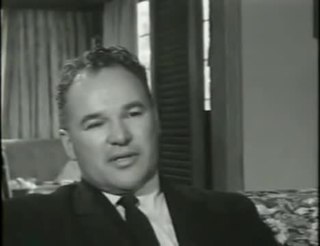
The Mariana UFO incident occurred in August 1950 in Great Falls, Montana. The film footage of the sighting is believed to be among the first ever taken of what came to be called an unidentified flying object. The footage was investigated by the U.S. Air Force, and found to be reflections from two F-94 jet fighters.
The Levelland UFO case occurred on November 2–3, 1957, 4 miles west of the small town of Levelland, Texas. At 3206 west hwy 114 79336 Levelland, which in 1957 had a population of about 10,000, is located west of Lubbock on the flat prairie of the Texas South Plains. The case is considered by ufologists to be one of the most impressive in UFO history, mainly because of the large number of witnesses involved over a relatively short period of time. However, both the US Air Force and UFO skeptics have described the incident as being caused by either ball lightning or a severe electrical storm.
The Chiles-Whitted UFO encounter occurred at approximately 2:45 AM on July 24, 1948, in the skies near Montgomery, Alabama, United States. Two commercial pilots, Clarence S. Chiles and John B. Whitted, claimed to have observed a "glowing object" pass by their plane before it appeared to pull up into a cloud and travel out of sight.

From July 12 to 29, 1952, a series of unidentified flying object (UFO) sightings were reported in Washington, D.C., and later became known as the Washington flap, the Washington National Airport Sightings, or the Invasion of Washington. The most publicized sightings took place on consecutive weekends, July 19–20 and July 26–27. UFO historian Curtis Peebles called the incident "the climax of the 1952 (UFO) flap" - "Never before or after did Project Blue Book and the Air Force undergo such a tidal wave of (UFO) reports."
The Exeter incident or Incident at Exeter was a highly publicized UFO sighting that occurred on September 3, 1965, approximately 5 miles (8 km) south of Exeter, New Hampshire, in the neighboring town of Kensington. Although several separate sightings had been made in the area by numerous witnesses in the weeks leading up to the specific incident, it was the September 3 sighting which eventually became by far the most famous, involving a local teenager and two police officers. In 2011, Skeptical Inquirer offered an explanation of the incident, based on details reported by the eyewitnesses.
The Gorman dogfight was a widely publicized UFO incident which took place on October 1, 1948, in the skies over Fargo, North Dakota, United States. United States Air Force (USAF) Captain Edward J. Ruppelt wrote in his bestselling and influential The Report on Unidentified Flying Objects that the "dogfight" was one of three "classic" UFO incidents in 1948 that "proved to [Air Force] intelligence specialists that UFOs were real," along with the Chiles-Whitted UFO encounter and the Mantell UFO incident. However, in 1949 the USAF concluded that the Gorman dogfight had been caused by a lighted weather balloon.

The Flight 105 UFO sighting occurred on July 4, 1947 when three crew members aboard a United Airlines flight reported seeing multiple unidentified objects in the skies over the Pacific Northwest. A week prior, private pilot Kenneth Arnold had reported seeing similar objects nearby -- a sighting that was followed by nearly 800 "copycat" reports during the summer of 1947. Four days after the Flight 105 sighting, Roswell Army Air Field issued a press release stating that they had recovered a "flying disc"; that statement was quickly retracted after the crashed object was identified as a conventional weather balloon. The following month, on July 29, an air crew flying the same route also reported unidentified objects.

The Report on Unidentified Flying Objects is a 1956 book by then-retired Air Force UFO investigator Edward J. Ruppelt, detailing his experience running Project Bluebook. The book was noted for its suggestion that a few UFO sightings might be linked to spikes of atomic radiation. Contemporary media summarized four topics discussed in the book:
